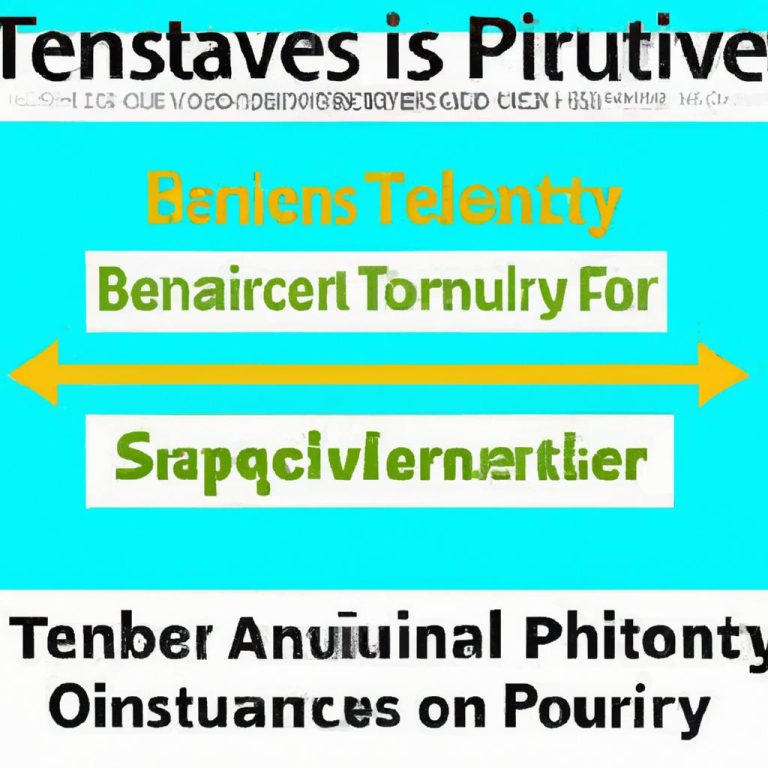Exploring the Dynamics of Trust Structures
When it comes to trust structures, the roles of trustees and beneficiaries are essential for the effective operation and success of the trust. The question often arises: who holds more power, a trustee or a beneficiary? In this discussion, we will delve into the roles, powers, and interactions of trustees and beneficiaries within a trust.
Understanding the Role of a Trustee
A trustee is an individual or entity tasked with managing the assets and property held in a trust for the benefit of the beneficiaries. Trustees have a fiduciary duty to act in the best interests of the beneficiaries and adhere to the terms of the trust agreement. Key responsibilities of a trustee include:
- Overseeing trust assets
- Making investment choices
- Distributing income and principal to beneficiaries
- Maintaining detailed records of trust transactions
- Handling tax filings for the trust
- Engaging with beneficiaries regarding the trust
Exploring the Role of a Beneficiary
A beneficiary is an individual or entity set to benefit from the assets held in a trust. Beneficiaries have specific rights outlined in the trust agreement and relevant laws. Responsibilities of beneficiaries may include:
- Providing necessary information to the trustee
- Adhering to obligations under the trust agreement
- Communicating needs and preferences with the trustee
- Participating in trust meetings or decision-making processes, if applicable
- Seeking legal recourse if concerns arise regarding the trustee’s actions
Examining Power Dynamics
In terms of power dynamics, trustees typically wield more control over trust assets and decision-making processes compared to beneficiaries. Trustees are tasked with managing and safeguarding trust assets, making investment decisions, and distributing income and principal to beneficiaries. On the other hand, beneficiaries have the right to receive distributions as outlined in the trust agreement and relevant laws.
Advantages of Being a Trustee
Serving as a trustee offers various benefits, including:
- Control over trust assets
- Authority to make investment decisions
- Earning trustees’ fees for services rendered
- Assisting beneficiaries in achieving financial objectives
- Preserving assets for future generations
Practical Guidance for Trustees
For individuals serving as trustees or considering taking on the role, here are some practical tips to consider:
- Understand the terms of the trust agreement and relevant laws
- Maintain detailed records of trust activities
- Regularly communicate with beneficiaries and provide updates
- Seek professional advice when necessary, especially in complex matters
- Act in the best interests of beneficiaries and avoid conflicts of interest
Case Study: Trustee vs. Beneficiary
Consider a scenario where a trustee hesitates to make certain investment decisions with potential risks that could benefit the trust in the long run. Beneficiaries believe that taking these risks could lead to higher returns. While the trustee holds decision-making power, beneficiaries have a stake in the outcomes. Effective communication and collaboration between the trustee and beneficiaries are crucial for reaching a mutually beneficial decision.
Final Thoughts
In summary, while trustees typically have more power and control over trust assets and decision-making, beneficiaries also play a vital role in the success of a trust. Collaboration between trustees and beneficiaries is essential to ensure the trust operates smoothly and all parties’ interests are safeguarded. By understanding the roles, responsibilities, and dynamics between trustees and beneficiaries, individuals can make informed decisions when establishing or managing a trust structure.
Trustee vs. Beneficiary: Unpacking the Power Dynamics in Trusts
Trusts are a popular estate planning tool that allows individuals to safeguard and manage their assets for the benefit of their loved ones. In a trust, there are two key roles: the trustee and the beneficiary. Understanding the power dynamics between these two roles is crucial for effectively managing a trust and ensuring that the wishes of the trust creator are carried out. In this article, we will delve into the trustee vs. beneficiary dynamic, exploring their respective roles, responsibilities, and the potential challenges that may arise.
Trustee: Duties and Responsibilities
The trustee is the individual or entity responsible for administering the trust in accordance with the trust document and the law. The trustee has a fiduciary duty to act in the best interests of the beneficiaries and to manage the trust assets prudently. Some key duties and responsibilities of a trustee include:
- Managing the trust assets
- Distributing income and principal to beneficiaries
- Investing trust assets wisely
- Maintaining accurate records
- Communicating with beneficiaries
Trustees play a vital role in ensuring that the trust operates smoothly and that the beneficiaries’ needs are met. It’s essential for trustees to act diligently, honestly, and in good faith in carrying out their duties.
Beneficiary: Rights and Entitlements
Beneficiaries are the individuals or entities that stand to benefit from the trust. Beneficiaries have certain rights and entitlements that are outlined in the trust document. Some common rights of beneficiaries include:
- The right to receive distributions from the trust
- The right to information about the trust
- The right to hold the trustee accountable for their actions
- The right to challenge the trustee’s decisions in court if necessary
Beneficiaries have a vested interest in the trust and rely on the trustee to fulfill their duties and act in the beneficiaries’ best interests. It’s crucial for beneficiaries to stay informed about the trust and to advocate for their rights when needed.
Power Dynamics and Challenges
The trustee-beneficiary relationship can sometimes be fraught with power dynamics and challenges, especially when there are disagreements or misunderstandings between the parties. Some common power dynamics that may arise include:
- Unequal knowledge or understanding of the trust
- Differences in financial interests or priorities
- Communication breakdowns or lack of transparency
- Conflicts of interest or breaches of fiduciary duty
Resolving power dynamics and challenges in the trustee-beneficiary relationship requires open communication, mutual respect, and a commitment to acting in good faith. Trusts are complex legal structures, and it’s essential for both trustees and beneficiaries to seek legal advice when needed to navigate any issues that may arise.
Benefits and Practical Tips
While the trustee-beneficiary dynamic can be complex, there are also many benefits to having a trust in place, such as:
- Asset protection and preservation
- Privacy and confidentiality
- Flexibility in estate planning
- Tax advantages
Some practical tips for trustees and beneficiaries to navigate the trustee-beneficiary relationship include:
- Establish clear lines of communication
- Seek legal advice when needed
- Act in good faith and with diligence
- Review the trust document regularly
Case Studies
Let’s look at a couple of case studies to illustrate the trustee vs. beneficiary dynamic in action:
| Case Study 1 | Case Study 2 |
|---|---|
| The trustee fails to communicate with the beneficiaries, leading to mistrust and confusion. | The beneficiaries challenge the trustee’s investment decisions, leading to a court dispute. |
Firsthand Experience
As a trustee or beneficiary, it’s essential to approach the trustee-beneficiary relationship with care, respect, and a commitment to upholding the trust’s intentions. By working together and seeking legal guidance when needed, trustees and beneficiaries can navigate the power dynamics in trusts and ensure that the trust operates smoothly for the benefit of all parties involved.
The post Trustee vs. Beneficiary: Unpacking the Power Dynamics in Trusts appeared first on lawyer.bet.




